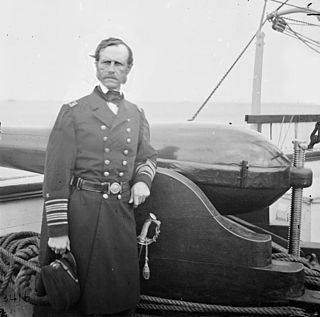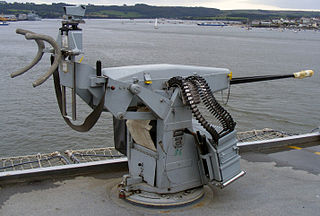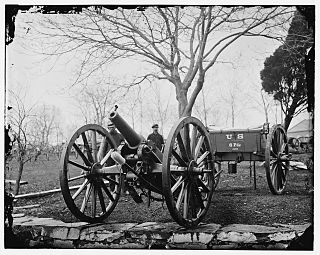 W
WThe Bofors 40 mm gun, often referred to simply as the Bofors gun, is an anti-aircraft autocannon designed in the 1930s by the Swedish arms manufacturer AB Bofors. It was one of the most popular medium-weight anti-aircraft systems during World War II, used by most of the western Allies as well as some captured systems being used by the Axis powers. A small number of these weapons remain in service to this day, and saw action as late as the Persian Gulf War.
 W
WThe Advanced Gun System (AGS) is a naval artillery system developed and produced by BAE Systems Armaments Systems for the Zumwalt-class destroyer of the United States Navy. Designated the 155 mm/62 (6.1") Mark 51 Advanced Gun System (AGS), it was designed to provide long range naval gunfire support against shore-based targets. A total of six of the systems have been installed, two on each of the three Zumwalt-class ships. The Navy has no plans for additional Zumwalt-class ships, and no plans to deploy AGS on any other ship. AGS can only use ammunition designed specifically for the system. Only one ammunition type was designed, and the Navy halted its procurement in November 2016 due to cost, so the AGS has no ammunition and cannot be used.
 W
WDahlgren guns were muzzle-loading naval artillery designed by Rear Admiral John A. Dahlgren USN, mostly used in the period of the American Civil War. Dahlgren's design philosophy evolved from an accidental explosion in 1849 of a 32-pounder being tested for accuracy, killing a gunner. He believed a safer, more powerful naval cannon could be designed using more scientific design criteria. Dahlgren guns were designed with a smooth curved shape, equalizing strain and concentrating more weight of metal in the gun breech where the greatest pressure of expanding propellant gases needed to be met to keep the gun from bursting. Because of their rounded contours, Dahlgren guns were nicknamed "soda bottles", a shape which became their most identifiable characteristic.
 W
WDriggs-Schroeder was the name of several naval guns designed by US Navy officers William H. Driggs and Seaton Schroeder for the United States Navy in the late 1880s, fitted on ships built in the 1890s. Some Driggs-Schroeder weapons were also adopted by the US Army. Driggs later founded the Driggs-Seabury Ordnance Company in 1897, in partnership with his brother Louis Labadie "L. L." Driggs and Samuel Seabury, a retired US Navy officer.
 W
WThe Hotchkiss gun can refer to different products of the Hotchkiss arms company starting in the late 19th century. It usually refers to the 1.65-inch (42 mm) light mountain gun; there were also a navy (47 mm) and a 3-inch (76 mm) Hotchkiss guns. The 42 mm gun was intended to be mounted on a light carriage or packed on two mules to accompany a troop of cavalry or an army travelling in rough country.
 W
WThe Oerlikon 20 mm cannon is a series of autocannons, based on an original German Becker Type M2 20 mm cannon design that appeared very early in World War I. It was widely produced by Oerlikon Contraves and others, with various models employed by both Allied and Axis forces during World War II, and many versions are still in use today.
 W
WThe Parrott rifle was a type of muzzle-loading rifled artillery weapon used extensively in the American Civil War.
 W
WThe Phalanx CIWS is a close-in weapon system for defense against incoming threats such as small boats, surface torpedoes, anti-ship missiles and helicopters. It was designed and manufactured by the General Dynamics Corporation, Pomona Division, later a part of Raytheon. Consisting of a radar-guided 20 mm (0.8 in) Vulcan cannon mounted on a swiveling base, the Phalanx has been used by the United States Navy and the naval forces of 15 other countries. The US Navy deploys it on every class of surface combat ship, except the Zumwalt-class destroyer and San Antonio-class amphibious transport dock. Other users include the British Royal Navy, the Royal Australian Navy, the Royal Canadian Navy and the US Coast Guard .
 W
WThe QF 3-pounder Hotchkiss or in French use Canon Hotchkiss à tir rapide de 47 mm were a family of long-lived light 47 mm naval guns introduced in 1886 to defend against new, small and fast vessels such as torpedo boats and later submarines. There were many variants produced, often under license which ranged in length from 32 to 50 calibers but 40 caliber was the most common version. They were widely used by the navies of a number of nations and often used by both sides in a conflict. They were also used ashore as coastal defense guns and later as an anti-aircraft gun, whether on improvised or specialized HA/LA mounts.
 W
WThe Ordnance QF Hotchkiss 6 pounder gun Mk I and Mk II or QF 6 pounder 8 cwt were a family of long-lived light 57 mm naval guns introduced in 1885 to defend against new, small and fast vessels such as torpedo boats and later submarines. There were many variants produced, often under license which ranged in length from 40 to 58 calibers, but 40 caliber was the most common version.
 W
WThe Wiard rifle refers to several weapons invented by Norman Wiard, most commonly a semi-steel light artillery piece in six-pounder and twelve-pounder calibers. About 60 were manufactured between 1861 and 1862 during the American Civil War, at O'Donnell's Foundry, New York City: "although apparently excellent weapons, [they] do not seem to have been very popular". Wiard also designed a rifled steel version of the Dahlgren boat howitzer, among other gun types. Further, Wiard unsuccessfully attempted to develop a 15 in (381 mm) rifled gun for the US Navy and proposed a 20 in (510 mm) gun. In 1881 he unsuccessfully proposed various "combined rifle and smoothbore" weapon conversions of Rodman guns and Parrott rifles.